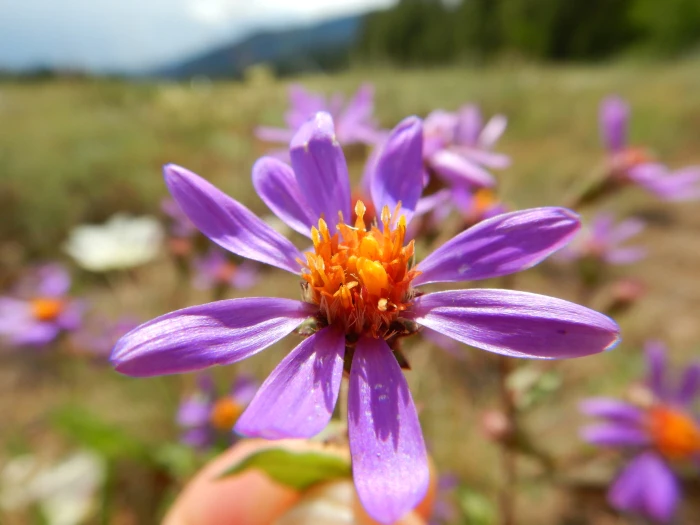Thickstem Aster
(Eurybia integrifolia)
Thickstem Aster (Eurybia integrifolia)
/
/

Matt Lavin
CC BY 4.0
Image By:
Matt Lavin
Recorded By:
Copyright:
CC BY 4.0
Copyright Notice:
Photo by: Matt Lavin | License Type: CC BY 4.0 | License URL: http://creativecommons.org/licenses/by/4.0/ | Rights Holder: Matt Lavin | Publisher: iNaturalist | Date Created: 2019-07-29T11:45:46-07:00 |





















Estimated Native Range
Climate Requirements for Yakima, Washington
| This Plant | Your Site | Plant Suitability for Your Location | ||
|---|---|---|---|---|
| • Precipitation | 9" - 85" | 8" | Your precipitation may be insufficient for this plant. Irrigate N" / year. | Irrigate N" / year |
| • High Temp. | 55°F - 93°F | 88°F | Your summer temperatures are normal for this plant. | Excellent |
| • Low Temp. | 1°F - 39°F | 22°F | Your winter temperatures are normal for this plant | Excellent |
This plant should grow well at your location with about N inches per year (Y minutes per month) of irrigation.
Summary
Eurybia integrifolia, commonly known as thickstem aster, is an herbaceous perennial native to montane meadows, open rocky slopes, and forest clearings in the western United States, including the Rocky Mountains, Great Basin, and Sierra Nevada. It is adapted to high elevation habitats and is often found in association with shrubs like sagebrush, bitterbrush, or juniper. The plant typically grows up to 8 inches tall and features a basal rosette of leaves with bright yellow ray florets encircling golden disc florets during its flowering season in late summer to early fall. The flowers are modest in size but can add a splash of color to naturalistic plantings. The fruit is an achene equipped with a fluffy pappus, which aids in wind dispersal.
Thickstem aster is valued for its drought tolerance and ability to thrive in poor, rocky soils, making it a suitable choice for rock gardens, xeriscaping, and restoration projects. It requires minimal maintenance once established and is best grown in full sun to part shade with well-drained soil. While not commonly used in traditional garden settings, its resilience and attractive foliage make it an interesting addition to native plant gardens. It is not known for serious disease or pest issues, but proper spacing is important to prevent potential mildew problems in more humid climates.CC BY-SA 4.0
Thickstem aster is valued for its drought tolerance and ability to thrive in poor, rocky soils, making it a suitable choice for rock gardens, xeriscaping, and restoration projects. It requires minimal maintenance once established and is best grown in full sun to part shade with well-drained soil. While not commonly used in traditional garden settings, its resilience and attractive foliage make it an interesting addition to native plant gardens. It is not known for serious disease or pest issues, but proper spacing is important to prevent potential mildew problems in more humid climates.CC BY-SA 4.0
Plant Description
- Plant Type: Shrub, Herb
- Height: 2-3 feet
- Width: 1-2 feet
- Growth Rate: Rapid
- Flower Color: Pink, Purple
- Flowering Season: Summer, Fall
- Leaf Retention: Deciduous
Growth Requirements
- Sun: Full Sun, Part Shade
- Water: Medium, High
- Drainage: Fast, Medium
Common Uses
Bee Garden, Bird Garden, Border Plant, Butterfly Garden, Low Maintenance, Showy Flowers
Natural Habitat
Montane meadows, open rocky slopes, and forest clearings
Other Names
Common Names: Thick-leaved aster, Western silver aster
Scientific Names: Eurybia integrifolia, Aster amplexifolius, Aster integrifolius
GBIF Accepted Name: Eurybia integrifolia